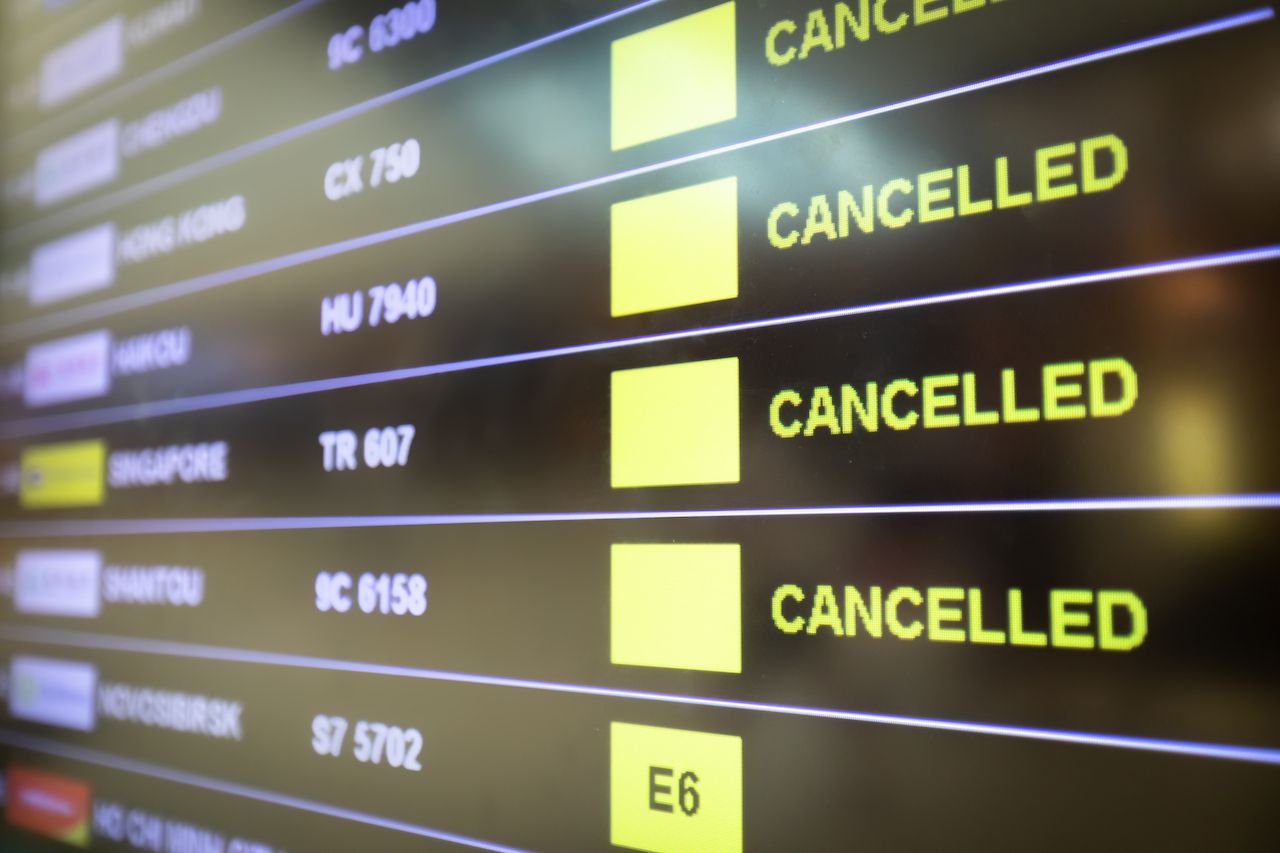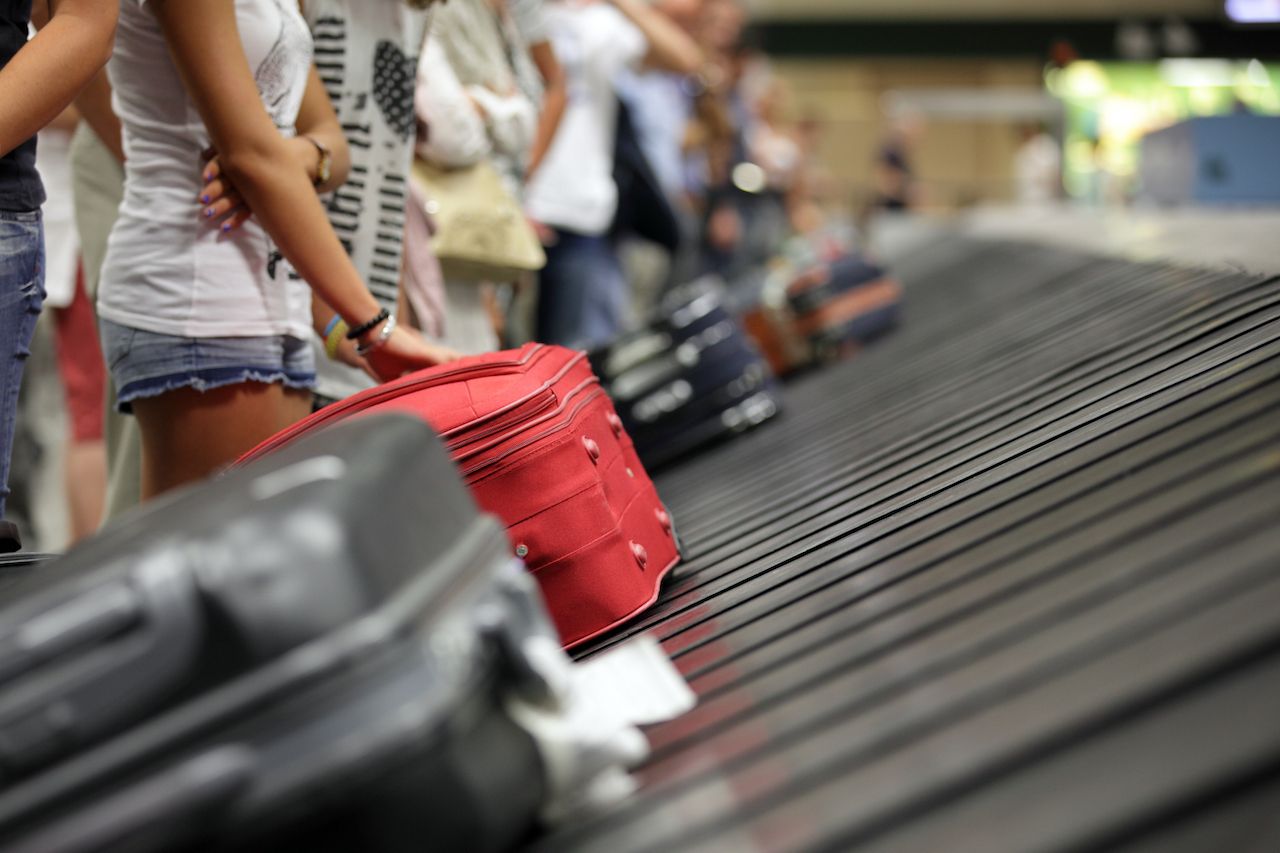Navigating the world of travel insurance can be more daunting to travelers than traveling the world itself. It’s easy to view travel insurance the same way as the insurance bet in blackjack: an expensive gamble that slightly mitigates risk for the player, but ultimately buys you nothing but peace of mind. In reality, travel insurance can be more useful — and affordable — than you might think, even if you’re traveling domestically.

The Difference Between Every Type of Travel Insurance You Need to Know
According to Daniel Durazo, director of communications at Allianz Partners, “One thing we have learned during the pandemic is to expect the unexpected, which is why travel insurance is such an important consideration for both domestic and international travel. So many unexpected events — anything from natural disasters and medical emergencies to travel delays or lost bags — can occur that would cause a traveler to cancel or interrupt their trip, so protecting your investment with travel insurance is a smart choice.”
With many countries requiring COVID-19-specific health insurance to enter, some companies have responded by offering travel insurance that covers some complications from COVID-19. Allianz, for example, offers several temporary accommodations designed specifically to cover trip cancellation, trip interruption, and emergency medical care related to COVID-19.
It’s not just international travel that’s getting a fresh take on travel insurance, either. As domestic travel remains the only option available for many, one insurance question persists: Do I need travel insurance for domestic travel?
Travelers have a tendency to feel safer inside their own borders compared to venturing abroad. As a result, travel insurance may feel less necessary. According to Brian O’Connell of InsuranceQuotes.com, that’s not exactly the case.
“Travelers still need travel insurance [domestically],” O’Connell says, “especially in the age of COVID. In the ongoing chaotic pandemic scenario, insurance that covers trip cancellation, trip delays, and trip medical coverage is almost mandatory for travelers. Those who want to travel without travel insurance may pay a big financial cost if they can’t make the trip but have paid for it, anyway. For those travelers on the fence who may decide to take out travel insurance, paying a moderate price (about 10 percent of the total trip cost) should provide robust trip coverage.”
With a seemingly limitless number of travel insurance plans at your fingertips, it can be tough to know which one is right for you, or whether you even need it at all. We’re here to clear those murky waters and help you navigate the intimidating world of travel insurance. These are the types of travel insurance plans you need to know to better understand which plan is right for you.
Package travel insurance
Package insurance is one of the most common and inclusive travel insurance plans. Also known as “comprehensive insurance” or simply “travel insurance,” a package plan is a catch-all for several different types of coverages, including cancellations, trip interruption, extreme weather, medical emergencies, evacuation, lost baggage, and more.
Who this is best for: Package insurance is one of the most popular travel insurance plans because it casts a wide net. This means it’s suitable for a wide range of travelers, including backpackers, families, solo travelers, and more.
What it covers: Trip cancellations, medical emergencies, interrupted trips, emergency evacuation, delayed baggage or trips, lost baggage, 24/7 assistance, and, depending on the plan, more.
Where the coverage can be used: A comprehensive package travel insurance plan can be used on pretty much any kind of trip, whether it’s a family vacation or solo backpacking adventure — domestic or international. The plans are designed to cover the trips travelers take most regularly.
When to purchase: Package plans are useful if you anticipate that you may need to cancel your trip for a medical issue, potentially inclement weather, or you want the convenience of pre-trip planning support. It can also give you peace of mind when it comes to potential medical emergencies that may occur while on your trip.
How much it costs: Anywhere from 4 percent to 10 percent of your total trip cost.
Trip cancellation and trip interruption insurance

Photo: NicoElNino/Shutterstock
Trip cancellation insurance is fairly self-explanatory, as it reimburses you for prepaid non-refundable trip costs if you need to cancel your trip for a covered reason. Trip interruption insurance is slightly different. It reimburses up to 150 percent of your unused trip costs if you have to end your trip and return home early for a covered reason.
One important distinction is that trip cancellation insurance takes effect before your trip begins, while trip interruption insurance goes into effect after the trip has already started.
What, exactly, is covered varies based on what insurance company you choose. The Allianz Travel Cancel Anytime policy, for example, allows consumers to cancel their trip for almost any unforeseen reason and receive a refund for a portion of their non-refundable travel deposits. According to Durazo, the Cancel Anytime product covers 100 percent of non-refundable, pre-paid trip costs when canceling a trip for a reason covered by the policy and up to 80 percent of those costs when canceling for another unforeseen reason, though the percent may vary by product.
Who this is best for: Travelers seeking peace of mind when they think their trip may be canceled for some reason. This could include seniors in poor health who may experience sudden illness, backpackers traveling to Southeast Asia during monsoon season, or traveling to any destination where labor strikes may interfere with your plans.
What it covers: Both insurance types cover injury or illness, natural disasters, hurricanes, unavoidable schedule conflicts like jury duty, traffic accidnts, property damage, terrorism or mandatory evacuations, bankruptcy, assaults, work conflicts (including termination), illness or death of your destination host, labor strikes, and theft or loss of your passport or visa.
Where the coverage can be used: Both trip cancellation and trip interruption insurance can be used anywhere.
When to purchase: If you want the flexibility to cancel the trip last minute, or you anticipate some kind of interruption to your trip. It’s also a useful tool for achieving peace of mind if you’re concerned about being financially liable for a trip you may not be able to take or complete.
How much it costs: Expect to pay between 5 and 10 percent of your total trip cost.
Evacuation insurance
Evacuation insurance is designed for travelers who want coverage for emergency medical evacuations, international security evacuations, and repatriation. The travel insurance company will handle the coordination of any necessary evacuations, including payment to the rescue team.
Who this is best for: Travelers who anticipate being in a location without easy access to medical care or medical facilities may want to consider an evacuation plan. This includes backpackers trekking in a remote jungle, families taking a ski vacation where physical injury is possible, and seniors with potential health issues who may require emergency medical assistance.
What it covers: Coordination and payment for emergency medical transportation to bring you to a medical facility or return you home. It also includes language translation services in foreign countries where you may not understand the language, and the repatriation arrangements — including handling, negotiations, and payments — necessary for returning your body home if you die on your trip.
Where the coverage can be used: Anywhere from cruises to ski trips in the Alps, but evacuation insurance is particularly advised for people traveling to remote locations where evacuation may become necessary.
When to purchase: If you’re going on a highly physical trip and participating in activities like mountain climbing, hang-gliding, bungee jumping, or anything else that may result in injury. The plan can also offer peace of mind for more common vacations like skiing and hiking.
How much it costs: Depends on the traveler’s age, the trip length, and other factors, but you can expect an annual plan to cost around $200 — covering all trips taken that year — and a single plan to cost between $45 and $68.
Annual travel insurance
Annual travel insurance covers you not just for a single trip, but for a year, making it useful for those who expect to travel multiple times during a given year.
Who this is best for: Annual insurance is best for business travelers, frequent backpackers, and even seniors and retirees who plan to take multiple trips per year.
What it covers: Many travel insurance types are available with an “annual” option. Make sure to check the full range of options to find the best fit for you.
Where the coverage can be used: Annual coverage can be used anywhere that standard single-trip coverage is also available.
When to purchase: Purchase annual insurance when you’re planning on taking multiple trips in a single year.
How much it costs: Varies widely by provider and type of coverage.
Travel medical insurance
Travel medical i bankruptsynsurance provides you with emergency medical coverage when you’re outside your home country. Before looking into medical travel insurance plans, check with your regular health insurance company to see what kind of coverage you already have when traveling.
Who this is best for: Travelers leaving their home country, people taking business trips abroad, when going abroad long-term for work or study, and for families or solo travelers moving to another country.
What it covers: Medical emergencies, accidents, emergency evacuations, and repatriation. Travel medical plans often include limited comprehensive-style benefits found in other plans as well, though the focus is usually on medical and evacuation coverage.
Where the coverage can be used: This coverage can be used anywhere, but is particularly advised for travelers leaving their home country.
When to purchase: This is one of the best travel insurance plans for travelers leaving their home country who are not concerned about cancellation, interruption, delays, and baggage, and if you’re engaging in physical or potentially hazardous activities. This is especially useful when traveling during the COVID-19 pandemic for any potentially unexpected hospital bills — just be sure to check that complications from COVID-19 are covered.
How much it costs: The cost of travel medical insurance is around $100, though it depends on the individual traveler, where you’re going, and the length of your trip.
Travel life insurance
The three main types of travel life insurance are: accidental death, air flight accident, and common carrier. Accidental death covers blanket coverage for the entire trip, air flight accident covers only the flight portion of the trip, and common carrier covers death or dismemberment while traveling on any form of public transportation.
Who this is best for: Those planning to take transportation on their trips that may be considered unsafe or unreliable. Since travel life insurance is generally geared toward insuring against unlikely and severe accidents, it’s mainly for anyone who wants to give themselves and their families extra peace of mind.
What it covers: Coverage varies depending on the type of life insurance you purchase. Accidental death, which is not widely offered by insurance companies, pays benefits to the beneficiaries in the event of an accidental death. Air flight accident and common carrier insurances cover death or dismemberment that occurs on a flight or other public transportation. It covers disability benefits if you’re seriously injured and cannot work, pays out term life benefits to beneficiaries if you die in a travel-related accident, emergency medical evacuation, and repatriation for returning your body home if you die on a covered trip.
Where the coverage can be used: This coverage can be used anywhere, but is recommended for frequent travelers who may often take unreliable transportation.
When to purchase: Purchase this insurance if you’re a frequent traveler who wants to make sure your family is financially covered in the event of your accidental injury or death.
How much it costs: Varies by type and scope of what’s covered.
Baggage and personal items loss insurance

Photo: Brian A Jackson/Shutterstock
This is a very specific travel insurance that provides reimbursement for lost, stolen, or damaged baggage and other personal items. It’s usually valid throughout the entire duration of your trip.
Who this is best for: Frequent travelers who often check their bags. It’s also useful for families traveling with several suitcases, or backpackers who rely heavily on their equipment.
What it covers: This insurance reimburses travelers for lost, stolen, or damaged personal items throughout the duration of your trip — not just during your flight. This is particularly useful if carrying expensive items valued over $1,000, like laptops, cameras, and jewelry.
Where the coverage can be used: This coverage can be used anywhere.
When to purchase: Purchase when you’re traveling with a lot of luggage, or carrying highly valuable items.
How much it costs: Varies widely by company and what you’re insuring.
Rental car insurance
Since you never know what can happen on the road, particularly in other countries where driving rules may differ, it’s a good idea to have rental car insurance. This insurance alleviates the financial risks associated with getting into an accident, or damaging the vehicle, when driving a rental car either domestically or abroad. Some rental companies may provide insurance through the rental, though some travel insurance companies provide extra or complete coverage as well.
Who this is best for: Rental car insurance is designed for anyone renting a car on a vacation or trip. It’s particularly useful abroad, where road signs and driving habits may be confusing, or where people may drive on a different side of the road than you’re used to.
What it covers: There’s a wide range of options, but rental insurance typically includes coverage for repairs due to a collision, towing costs, and loss-of-use charges incurred by a rental car company. It may also include travel assistance services like roadside assistance while on a covered trip.
Where the coverage can be used: Rental car insurance can be purchased both domestically and abroad.
When to purchase: If you’ll be driving in difficult conditions, or in a country whose driving rules are unfamiliar to you. Iceland, for example, is a good place to buy rental car insurance, because they offer protection against sand, gravel, and ash, which often damage cars on the rugged Icelandic roads.
How much it costs: Rental car insurance usually costs between $10 and $20 per day.
Travel delay insurance
A watered-down version of trip cancellation insurance, trip delay insurance covers you in the event that unforeseeable circumstances delay your trip. The insurance reimburses you for additional transportation costs and expenses.
Who this is best for: Trip delay insurance is best for travelers looking to guard against the financial impact of a trip being delayed due to unforeseen circumstances, including serious weather events, transportation strikes, etc. It’s the perfect option for travelers worried about weather interfering with their travel plans.
What it covers: This insurance will reimburse you for lost pre-paid travel expenses, and costs incurred due to the delay, like meals, accommodations, communication, and transportation. To qualify for reimbursement, the delay must last for a specified period of time, which will be outlined in your plan.
Where the coverage can be used: It can be used to cover any pre-trip expenses associated with the delay, including food, accommodation, and cab rides. Keep in mind that there is usually a reimbursement limit, however, so you can’t go out and spend $200 on dinner while waiting for your delayed flight.
When to purchase: If you’re worried about weather or other unpredictable circumstances delaying your trip, or if you simply want peace of mind in advance of travel.
How much it costs: Varies widely by provider.
Change fee coverage
Changing the dates of your flight is an infamously expensive and frustrating experience, and that’s why change fee coverage exists. If you need to change your airline ticket for a covered reason, you’ll be reimbursed for the fees charged by the airline.
Who this is best for: Travelers looking for a safety net in the event of unforeseen circumstances. It’s especially useful for backpackers traveling abroad in areas known for inclement and unpredictable weather.
What it covers: Change fee insurance covers the cost of changing your flight ticket for a range of approved reasons. These reasons typically include trip cancellation or interruption due to unforeseen circumstances or inclement weather.
When to purchase: Consider this insurance when traveling during the winter, or you anticipate severe weather may require you to change your flight.
How much it costs: Varies by location and transportation carrier.
Pre-existing medical condition coverage
If you have a diagnosed illness you may be eligible for pre-existing medical condition coverage. To obtain this type of coverage you must have a special waiver, which removes the pre-condition exclusion that might otherwise preclude you from receiving coverage.
Who this is best for: Anyone with a pre-existing condition.
What it covers: Any visit to a doctor or hospital that’s related to your pre-existing condition while traveling. These conditions may include high blood pressure, asthma, cancer, and a history of heart attacks.
When to purchase: It’s best to purchase the pre-existing medical condition waiver if you think your pre-condition may pose difficulties on your trip.
How much it costs: Varies by person.
Baggage delay

Photo: Marcel Poncu/Shutterstock
If you’ve ever arrived at your destination only to be informed that your luggage was lost and will take a few days to arrive, then you know the pain of not having baggage delay insurance. This is one of the most useful travel insurance plans when you’re put in a tight squeeze and when the airline loses your luggage, leaving you without your essential belongings. The insurance will reimburse you for the emergency purchase of essential items.
Who this is best for: Any traveler who wants to make sure they aren’t inconvenienced by the loss of luggage. Whether it’s backpackers, families, or business travelers, no one wants to go several days without the ability to replace their essential items.
What it covers: Baggage delay insurance will reimburse you for the purchase of essential items like toiletries, clothes, and phone charging cables when your baggage is delayed by an airline, bus, cruise ship, or train. You will usually receive a fixed inconvenience payment up to a certain dollar amount per day.
When to purchase: When you want to ensure you have a viable alternative if your luggage is unexpectedly lost.
How much it costs: Varies by your baggage and provider.
Flight insurance
Flight insurance is one of those safeguards all travelers wish were built right into the airline ticket itself. Unfortunately, if you have to change or cancel your flight, usually you won’t be reimbursed. Enter flight insurance. Flight insurance protects the cost of your flight if one of several incidents takes place.
Who this is best for: This insurance provides the ultimate flexibility for those who want to avoid expensive airline fees for changing or canceling a flight.
What it covers: Flight insurance reimburses you for the cost of your flight in the event of bad weather conditions (storms, hurricanes, and blizzards), unexpected flight delays that cause you to miss a connection, a mid-flight diversion that brings you to a different airport than expected, injury or illness before departure, and terrorist events in the vicinity of your destination. Flight insurance also usually includes trip cancellation or interruption coverage, lost or delayed baggage coverage, and flight delay coverage, which pays you if a flight is delayed for a specified amount of time.
When to purchase: Purchase this insurance when you want extra peace of mind before your vacation.
How much it costs: Varies by provider and scope.
Required to work insurance
It’s a traveler’s worst nightmare to look forward to a vacation only to be forced to cancel due to work reasons. It’s even worse if you still end up having to pay for a vacation you never took. This is one of the only travel insurance plans that protects travelers who must cancel a trip due to work-related reasons.
Who this is best for: Travelers with unpredictable jobs, or quickly-changing work schedules, will want to seriously consider this insurance.
What it covers: This insurance protects travelers forced to cancel their trip due to work reasons. Covered reasons include working due to changes in work schedule, being directly involved in a merger, acquisition, product recall, or bankruptcy proceedings, or if your place of work has been the victim of a natural disaster, fire, flood, burglary, or vandalism. You must not be aware of the work requirement or circumstance when you purchase the insurance plan.
When to purchase: Purchase this insurance if your work situation is unpredictable, or if you own a small business that may require your emergency attention with little notice.
How much it costs: Varies by employment and provider.